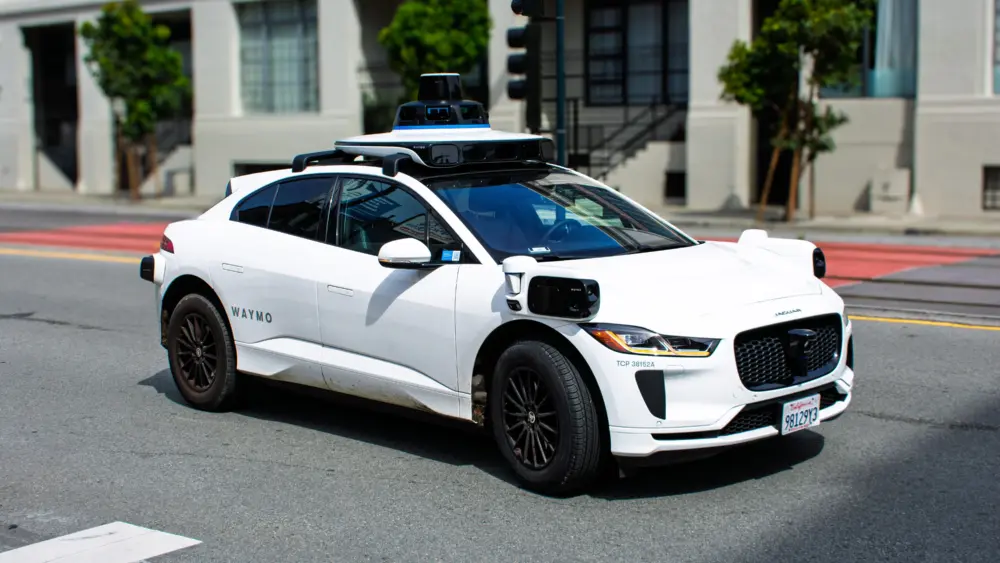I visited the future last week—twice, in fact. And it was definitely a little weird. My time machine was the newly-opened Amazon Go storefront in San Francisco’s Financial District, at the corner of California and Battery. It’s a couple of blocks from my office, and one of only six such stores in the country (three in Seattle, and two more in Chicago). In case you haven’t heard about Amazon Go, it sells food and drink and necessities, much like Target, CVS, and 7-11. What’s the big difference? Aside from a more attractive space, there are no cashiers or checkout stands. You walk in, get what you need and walk out.
From a shopper’s perspective, it’s simple—download the Amazon Go app on your smartphone, and enter your credit card information. Even in the future, you still pay for what you buy, it just takes less effort. Once you’ve done that, the app displays a QR code “key” (a square full of small black-and-white squares in apparently random order). Now you’re ready to go to the store.
When you enter the store, there’s a space to the right to sit as well as a stand with napkins, utensils, and the like. Directly in front, you’ll find several waist-high turnstiles, done in blond wood, with a small scanner on top at the near end. The barriers are clear plastic. Place your phone with the app “key” face down on the scanner, and the barriers swing back to permit entrance.
The store seems well designed, as if Apple decided to do a convenience store. The shelves in the store are well labeled and it’s easy to find what you want. On my first visit, I picked up a can of Diet Coke off the shelf of refrigerated drinks, both because I drink it, and because at 69 cents, it was probably the cheapest item in the store.
And then, I walked through the exit turnstile and left the store, sheepishly holding my Diet Coke in plain sight, and feeling a bit like a shoplifter. No alarms sounded, no employees chased me down on the street demanding payment, and a minute or two later, a receipt showed up in the app on my iPhone. Quick and painless.
There were a fair number of orange-shirted Amazon Go employees in the store. The most necessary one was the person stationed by the turnstiles to prevent someone hopping the turnstile, although I suspect the store software has measures to detect this. Other employees made sure popular products were restocked. It’s hard to say how many employees a “regular” store of the same size would need, and whether Amazon is aiming at the cost associated with employees. But Amazon is clearly looking for ways to eliminate the bottleneck of checkout, and they have succeeded.
The second time I visited, the store was more crowded. I picked up an ice cream bar, stuck it in my jacket pocket and walked out. Once again, the receipt showed up after a minute. I should add here that prices didn’t seem out of the ordinary. My can of Diet Coke was 69 cents, and my ice cream bar was $2.99, probably less than what I would’ve paid at the nearby Target.
The magic, which has been partially revealed in Amazon’s patent filings, involves a lot of cameras (scanning both shelves and shoppers), shelves which measure the weight of what they’re holding, and clever software doing an astounding amount of real-time image processing. The brief tutorial that comes with the app stresses the need not to take something off the shelf for another person, lest you be charged for it. Amazon says that no facial recognition is involved in their “Just Walk Out” technology, just highly-advanced computer vision (the ability to recognize objects) and sensor fusion, which involves multiple sensors to confirm you picked up a Coke and not the cupcake next to it.
It’s important to note that the technology doesn’t involve a shopper scanning anything—it’s not self-checkout, nor is special packaging involved. It’s all about smart software.
Knowing that you can get in and out of a store quickly encourages people to use it. And not having to do anything out of the ordinary makes it easy. It’s hard to say if this is what the future of retail looks like, or whether it will appear at Whole Foods anytime soon, now that it’s owned by Amazon. But the novelty is fun, and I suspect the store is a bit of a tourist attraction. Aside from the weirdness of feeling like a shoplifter, Amazon Go delivers on its promise of changing the shopping experience to allow customers to “just walk out.”
Not to be outdone, Walmart just announced it will open a cashier-less Sam’s Club Now store, similar to Amazon Go, in Dallas later this month.
Author
-

Michael E. Duffy is a 70-year-old senior software engineer for Electronic Arts. He lives in Sonoma County and has been writing about technology and business for NorthBay biz since 2001.
View all posts




